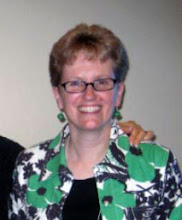I have a very uncomfortable relationship with disability simulation exercises.
Don't get me wrong, I want to like them. They are always well-intentioned. Designers always hope that getting people familiar with the sensations, experiences or equipment of disability will make them more welcoming and understanding of people with disabilities in their lives.
The idea seems sound and it should work, yet most of these exercises--from riding in wheelchairs, to wearing blindfolds, to puppets and role-plays and beyond--just seem to make most participants feel sorry for people who live with disabilities everyday and relieved to get back to their own lives.
Pity and relief are not what I'm aiming for.
I have been puzzling about this for a long time. I know that information alone does not change behavior, and I believe that making concepts experiential improves the likeliehood of student change... Yet these programs just don't teach the things I want people to learn.
For a long time I thought it was the "how" of the experiences that sent folks down the wrong road--maybe things weren't multi-sensory enough, or structured enough or something. But now, I think it's the "what" of the activities that misses the mark.
I have recently realized that disability simulations create the experience of changing from not having a disability to having one rather than the experience of day-to-day life with a disability. Consequently, I think participants get a taste of the emotions that accompany really big changes in our lives. Participants learn that those feelings are what it's like to have a disability.
Well, the emotions of 'big change' certainly can accompany new disability diagnoses (and can be intense.) There can be fear, anger, embarrassment, depression, denial, bargaining and more. For a while things can be utterly frustrating and baffling.
Many people who acquire disabilities through age, illness or injury go through these feelings. Parents whose children are diagnosed with a disability may experience them as well.
But--and here is the kicker--those 'big change emotions' are temporary in disability just like they are in life's other 'big changes.'
And over time most people respond to disability the same way they respond to other big changes.
They adjust.
Eventually people go from saying "I want my old life back" to "Now I do things this way."
Disability simulations just don't impart that perspective. So how do we create that?
What can we change or add to our sensitivity and awareness programs to make the message of understanding stronger?
Here is a link to a new on-line awareness game. (h/t Media Dis n Dat)
What do you think?
See here for another perspective.
Subscribe to:
Post Comments (Atom)






9 comments:
interesting website. I'll spend more time checking their games out when I have a sec. You're point is a good one and I hadn't thought of that before. Games and simulations focus on the difficulties, not the adaptations. We use simulations in my classes to learn what it's like to be blind, and I think the best part of this is that we are under blindfold often, which teaches us adaptations. We are shown that a blind person can learn new skills to travel very effectively and independently. It's not just a big, dark world.
Thanks Terena, It does seem that multiple repititions over time might change participants' focus. And perhaps being in the exercise with a focus that isn't 'what it's like to have a disability' might have value (like you are focused on mobility and teaching, etc.)
It would be worth figuring out, I think.
Excellent post, Terri. Can I just say I've had that same question, too? What do simulations really teach?
I don't have an answer as to how (or if) simulation exercises should be taught.
But I have observed that what changes people is having a relationship with a person with a disabilty. In my book it is the only 'method' that is effective.
Barbara
Oh, and you find this link interesting - for some reason I associated it with this post.
http://danieljohnmaxwellspranger.blogspot.com/2009/12/relocating.html
Boy do I feel silly! You MAY find...and I know you figured that out, but then I did not even notice I pasted the wrong url! (as interesting as that one was; I had just shared it with someone else.) If I can get my clicks in order, you MAY find this one interesting, Terri (also). *blush*
http://blackknightsbrood.wordpress.com/2010/01/10/hey-diddly-dackly/
Thank you Barbara! :) I think that relationship is absolutely the best way to form understanding. But with the prevalance of segregation and other things that interrupt that I do think there is value in building bridges intentionally. Figuring out how is tough though...
Both posts interesting (lol) but Diddly-Dackly really does connect, thanks!
You have made me really think with this post. I have always been a fan of disability simulation exercises, but I agree that even though we don't intend to, we focus on the difficulties of people with disabilities. When in reality, we want people to relate with them and to understand the ways in which people with disabilities do things differently...not that it is just more difficult. I, too, agree that relationships are the best way for people without disabilities to begin to understand people with disabilities. GREAT post!
Thanks Megan, Kathie Snow (www.disabilityisnatural.com) would say we don't help recognizing differences, we need help recognizing similarities... I think she may be on to something, nbut how do we set those experiences up?
Post a Comment